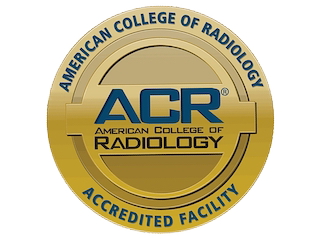
Positron Emission Tomography (PET) is a medical imaging technology that allows physicians to visualize the body's abnormal cellular activity. PET scans produce digital pictures that can, in many cases, aid the physician in identifying several forms of cancer, damaged heart tissue and brain disorders.
A PET scan is very different from ultrasound, X-ray, MRI, or computerized tomography (CT) scans, which detect changes in the body structure or anatomy, such as a sizeable tumor or musculoskeletal injury. A PET scan can help physicians distinguish between living and dead tissue or between benign and malignant disorders, whereas other imaging technologies merely confirm the presence of a mass or abnormality.
Since a PET scan images the biology of disorders at the molecular level, it can help the physician detect irregularities in cellular activity at a very early stage, generally before anatomic changes are visible. A PET scan can, in many cases, help identify disease earlier and more specifically than ultrasound, X-ray, MRI or CT scans.
A Computed Topography (CT) scan is a medical procedure that uses a series of X Ray beams to take a “sliced” image of the body. When these images are combined, it provides a 3D model for doctors to observe the patient’s soft tissues, bones, and organs for abnormalities.
While PET scans can detect molecular changes, CT scans are better equipped to detect large-scale details of the patient’s anatomy. By combining both scans into one procedure, doctors can both examine a patient’s health in more depth as well as monitor progress.
Preparing for your PET or PET/CT Scan
You must fast for 4-6 hours prior to the diagnostic exam. If you are diabetic, you should speak to our office for specific instructions. To begin the PET part of the exam, your technician will give you a radiopharmaceutical injection. PET radiopharmaceuticals lose their radioactivity very quickly (between 2 minutes to 2 hours), and we apply a minimal amount. Within 10 minutes to 6 hours, all traces of radioactivity will be gone from your body. After the radiopharmaceutical is administered, our provider will advise you to wait between 30 minutes to an hour. This gives time for the medicine to distribute itself through your body.This typically takes 30 minutes to one hour, and you may relax in a soft chair as you wait. Once this period is over, your provider will take you to the PET/CT machine to begin the exam.
During the Scan
Your technician will help you lie down on the scanner’s cushioned table. The table will move slowly through the tube-shaped scanner as it acquires the information needed to generate diagnostic images. You will be asked to lie very still during the scan because movement can interfere with the results.
During the CT portion of the exam you may be asked to hold your breath for a few seconds to minimize body movements. You may hear a humming noise during the exam, but you will not feel anything unusual. It is normal to feel the table vibrate while certain image locations are taken, but you can rest assured that the technician will monitor your progress at all times.
The average PET/CT scan lasts from 35 to 45 minutes. To prepare adequately, allot 2 to 3 hours for your appointment to allow the radiopharmaceutical to distribute evenly.
After the Exam
Once the PET/CT exam is complete, you may resume normal activity. You may help flush out the radiopharmaceuticals from your system by drinking plenty of water.You do not have to worry about extended radiation because radiopharmaceuticals exit the body within 10 hours.
In the meantime, our technician and provider will prepare your exam results to provide a detailed diagnosis and report. Our office may call to schedule a follow up so you can be fully informed on your health results.